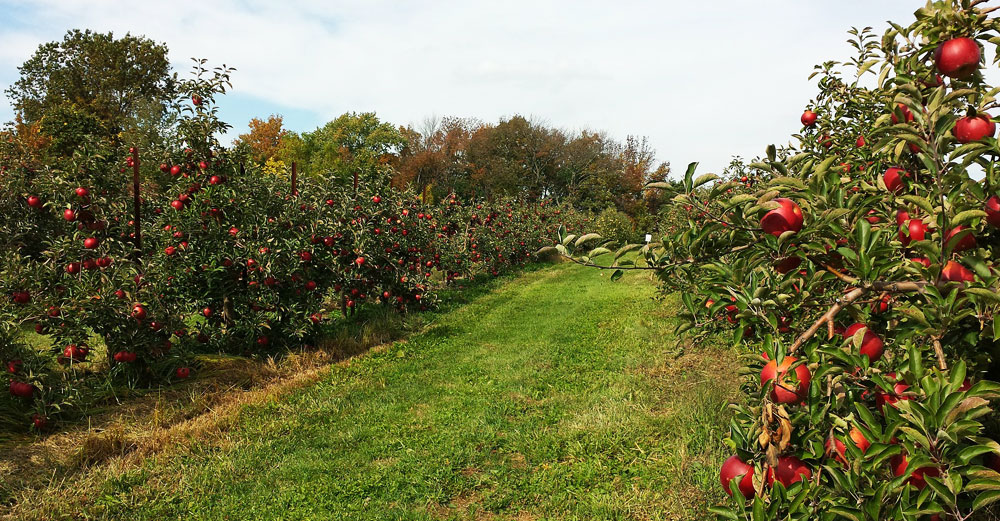
This year has been a strange one weather-wise for New York. The winter was uncharacteristically short and mild, the spring was cool, and now we’re experiencing a hot and rather dry summer.
New York farmers depend on the predictability of seasonal temperatures and weather conditions to know when to plant and harvest their crops. But what happens when the weather is not so predictable? What effect has this year’s weather had on farmers’ growing and harvesting seasons? To find out, we spoke to Shawn Bossard, farm manager and instructor at Morrisville State College.
Mr. Bossard has managed the dairy facility at MSC for seven years, but his experience with farming goes well beyond livestock. At Morrisville’s Teaching and Research Farm, students and faculty study atmospheric conditions and rainfall trends for a month before planting their crop in mid-April through May in hopes of a measurable harvest.
How do weather patterns affect our farming season?
We spoke to Mr. Bossard to find out what an optimal planting season is like for New York farmers. According to him, “Dry soil with some moisture is best for planting, and after that, crops need a balance of wet and dry spells to flourish and allow for field work. A spring that is dry enough for field work and then rains in the freshly planted seed is optimal. Once the seed is in the ground, we hope for a warm June-July to help our crops grow.” It’s a delicate process that Morrisville students are learning to master.
Strange and unpredictable weather patterns have different effects on different crops. Mr. Bossard says maple trees thrived this year: the mild winter and early, yet cool spring yielded an early, and bountiful, maple syrup season.
This is due to the tree’s physiology. Only under a unique set of conditions can a maple tree produce sap. According to Cornell University’s Sugar Maple Research & Extension Program, during warm periods, pressure builds in maple trees, causing the sap to flow out of the tree. During cold periods with freezing temperatures, suction draws water into the tree, replenishing the sap.
This means that in order to get the best maple syrup, temperatures during the day should reach around 40 degrees F, but at night they should drop below freezing. Because of this winter’s relatively warm weather, maple production started early resulting in fresh maple syrup hitting the shelves earlier than usual.
Maple trees won’t be the only crops affected by this year’s weather. New York’s apple trees may have unknown outputs this year due to a cool spring and dry summer.
How do we deal with changing weather patterns?
“The Finger Lakes region and part of Western New York is in crisis mode because it’s so dry,” said Mr. Bossard. “The warm weather with little snow set us up for a dry growing season.”
This presents a difficulty for apple orchards. According to Mr. Bossard, apples are a customer-driven crop because customers have flavor preferences for which type of apple they like best. Late frosts and dry summers are a challenge, and the fruit crop has to be managed accordingly. In addition to apples, conventional crop farmers are also looking at varieties of corn that offer drought resistance. And farmers that grew wheat and barley this year are doing extremely well, as those are arid crops.
Despite this, Mr. Bossard tells us conditions could be worse, citing an oft-quoted farming mantra: “Dry weather will scare you, but wet weather will kill you.” He means that although dry weather will lower harvest yields, the quality of the crop will not suffer.
At Morrisville, faculty and students work with soil quality to ensure healthy crops even in drought. “If we pay attention to our soil health, we can mitigate the extreme weather,” Mr. Bossard said.

Part of this practice is for farmers to plant cover crops such as rye or clover that can mitigate low rainfall or non-optimal growing conditions by building soil organic matter. With this in mind, faculty and students at Morrisville planted sorghum, a cover crop that is highly resistant to drought. Crops like sorghum followed by a cover crop can produce healthy soil that absorbs water after a dry spell, providing land that will yield better crops in the future. The more organic matter that is present in the soil, the more water that can be absorbed and retained.
This sustainability effort at Morrisville teaches future farmers vital skills to preserve the health of the land. For now, though, Mr. Bossard says students are most excited about using the big equipment to harvest the corn in the fall.
The bottom line? Mr. Bossard says despite strange, unpredictable weather conditions, New York farmers can still manage their crops for bountiful harvest. After all, “You can’t escape drought or wet weather, but you can take the edge off.”



